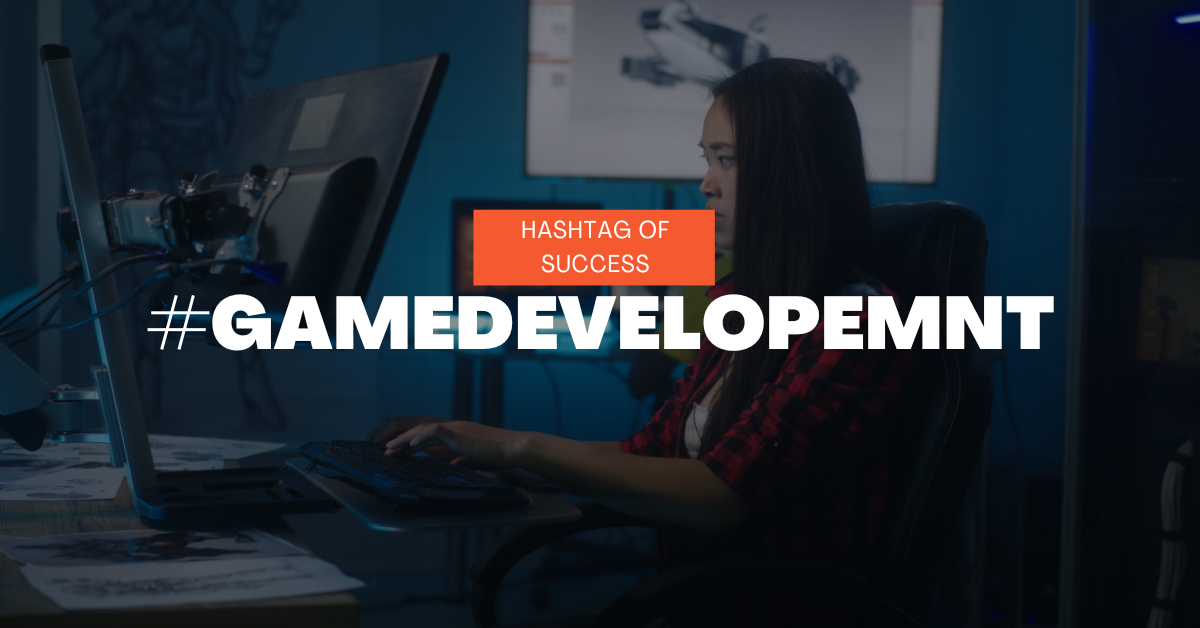Are you a game developer looking for ways to promote your game on social media platforms? Hashtags are a powerful tool that can help you reach a larger audience and increase your game’s visibility. In this guide, we will discuss the best hashtags for game developers to use and how to use them effectively to promote your game on social media.
What are Hashtags
Hashtags are a way of categorizing content on social media platforms like Twitter, Instagram, and Facebook. They are a combination of letters, numbers, and symbols that are preceded by the pound or hash symbol (#). When a user clicks on a hashtag, they can see all the content related to that topic. By using relevant hashtags, you can reach a larger audience and increase your game’s visibility.
To effectively use hashtags, you need to know which ones are relevant to your game and how to use them effectively. In the following sections, we will discuss the best hashtags for game developers to use and provide tips on how to use them.
Best Hashtags for Game Developers to Use
- #gamedev – This hashtag is the most popular one for game developers. It is used to showcase game development progress and connect with other game developers.
- #indiegame – This hashtag is used to promote indie games, which are games developed by small independent studios or individual developers.
- #gaming – This hashtag is used to promote gaming-related content, including games, consoles, and esports. Works best when you have a playable game.
- #gamersunite – This hashtag is used to connect with gamers and gaming communities.
- #gamingcommunity – This hashtag is used to promote gaming communities and connect with other gamers.
- #gamedevelopment – This hashtag is used to promote content related to game development and connect with other game developers.
- #videogames – This hashtag is used to promote video games and gaming-related content.
- #gamerlife – This hashtag is used to showcase the life of a gamer and connect with other gamers. Best for Devlogs
- #gamingnews – This hashtag is used to promote gaming news and updates. Best for announcements.
- #gamingmemes – This hashtag is used to share gaming-related memes. Create memes related to your game and share them.
- #feedbackfriday- This hashtag is used to get feedback on your game or other content. Developers post pictures, videos or game mechanics which they need feedback on.
- #screenshotsaturday- This hashtag is use to showcase your games progress on a weekly basis. Developers post screenshot of their game, very Saturday to increase following.
How to Use Hashtags Effectively
- Research relevant hashtags – Use tools like Hashtagify, RiteTag, and Tagboard to research relevant hashtags for your game. These tools can help you find the most popular and relevant hashtags for your game.
- Use popular hashtags – Use popular hashtags like #gamedev and #videogames to increase your game’s visibility. These hashtags have a large following and can help you reach a wider audience.
- Use niche hashtags – Use niche hashtags like #indiegame and #gamingmemes to reach a specific audience. These hashtags may have a smaller following, but they are more targeted and can help you reach the right audience for your game.
- Don’t use too many hashtags – Use 2-3 relevant hashtags per post. Using too many hashtags can make your post look spammy and reduce engagement.
- Use hashtags in the right context – Use hashtags in the context of your post. Don’t use irrelevant hashtags that have nothing to do with your game. This can result in lower engagement and reduce your credibility.
- Engage with other users – Engage with other users who use the same hashtags as you. Like, comment, and share their posts to build a community around your game. This can help you connect with other gamers and increase your game’s visibility.
Tips for Using Hashtags on Different Social Media Platforms
- Use 1-2 hashtags per tweet – Twitter’s character limit is 280 characters, so it’s best to use 1-2 hashtags per tweet.
- Use relevant hashtags – Use hashtags that are relevant to your tweet and your game.
- Use trending hashtags – Use trending hashtags when appropriate to increase your visibility. You can find trending hashtags on Twitter’s explore page.
- Use Gif with hashtags- use related gifs or videos from your game to increase engagement.
- Use 9-11 hashtags per post – Instagram allows up to 30 hashtags per post, but using too many hashtags can make your post look spammy. Use 9-11 relevant hashtags per post.
- Use niche hashtags – Use niche hashtags to reach a specific audience. These hashtags may have a smaller following, but they are more targeted and can help you reach the right audience for your game.
- Use popular hashtags – Use popular hashtags to increase your visibility. You can use up to 5 popular hashtags per post.
- Use 1-2 hashtags per post – Facebook’s algorithm favors posts with fewer hashtags, so it’s best to use 1-2 relevant hashtags per post.
- Use relevant hashtags – Use hashtags that are relevant to your post and your game.
- Use trending hashtags – Use trending hashtags when appropriate to increase your visibility. You can find trending hashtags on Facebook’s trending topics page.
Conclusion
Using hashtags is an effective way to promote your game on social media platforms. By using relevant hashtags, you can reach a larger audience and increase your game’s visibility. Use the tips and tools in this guide to find the best hashtags for your game and use them effectively to promote your game on social media.
Don’t forget to engage with other users and build a community around your game. This can help you connect with other gamers and increase your game’s visibility even further. Happy hashtagging!


